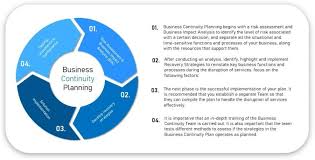Ad-Hoc Reporting: The Key to Agile Decision-Making in Business

Ad-hoc reporting is a crucial aspect of modern business intelligence that empowers organizations to make informed decisions swiftly and effectively. Unlike standard reports that follow a fixed schedule, ad-hoc reports are generated on-the-fly, allowing businesses to respond to immediate needs and changing circumstances. Popular tools like Intellicus offer a user-friendly interface and robust features, making it easy for users of all skill levels to perform ad-hoc reporting without significant investments. This flexibility is essential in today’s fast-paced environment, where data-driven decisions can make or break a company.
Ad-hoc reporting allows businesses to create tailored reports that address specific questions or challenges as they arise. It provides businesses with the agility to respond to unexpected events and capitalize on real-time insights. This can be seen in the following example. For instance, a retail company might need to analyze sales data from the past week to determine which products are flying off the shelves and which are gathering dust. By generating an ad-hoc report, they can quickly pivot their marketing strategies to boost sales of underperforming items.
Why is Ad-Hoc Reporting Critical for Businesses?
The importance of ad-hoc reporting can be illustrated through a real-world example. Consider a tech startup that has just launched a new app. They notice a sudden spike in user engagement but are unsure of the cause. By utilizing ad-hoc reporting, the team can analyze user behavior data, segmenting it by demographics, time of day and features used. This immediate insight allows them to identify that a particular marketing campaign is driving the engagement, enabling them to double down on that strategy.
Moreover, ad-hoc reporting fosters a culture of agility within organizations. It encourages teams to ask questions and seek answers without waiting for the next scheduled report. This proactive approach can lead to innovative solutions and improved operational efficiency.
Ad-hoc reporting is not just a luxury; it’s a necessity for businesses aiming to thrive in a competitive landscape. By enabling quick access to relevant data, it empowers organizations to make informed decisions, adapt to changes and seize opportunities as they arise.
How to Select the Right Ad-Hoc Reporting Tool?
When selecting the right ad-hoc reporting tool, organizations should consider several best practices to ensure they meet their specific needs and enhance their data-driven decision-making capabilities. Here are some key factors to keep in mind:
User-Friendliness
The tool should have an intuitive interface that allows users of all technical levels to easily create and customize reports. A user-friendly design saves time and encourages broader engagement, making it more effective in meeting various organizational needs.
Data Integration
Choose a tool that easily integrates with multiple data sources, such as databases and cloud services. This ensures users can access real-time data, leading to more accurate analysis and timely reporting for better decision-making.
Customization Options
Look for tools that offer strong customization features, enabling users to tailor reports to their specific needs. This includes selecting relevant metrics and creating various visualizations. Custom formatting helps convey insights effectively, enhancing understanding and decision-making. Beyond customization, collaboration features enhance the ability of teams to work together on reports.
Collaboration Features
An effective ad-hoc reporting tool should enhance teamwork on data projects. Features for sharing reports and providing real-time feedback foster collaboration. Version control ensures everyone has access to the latest information, reducing misunderstandings and improving data interpretation.
Scalability
An ad hoc reporting tool should be able to handle increasing data volumes and more complex reporting needs without sacrificing performance. Scalability ensures that decision-makers always have timely insights, no matter the data’s complexity.
Support and Training
It’s crucial to choose a tool that offers comprehensive support and training resources. This includes tutorials, documentation and responsive customer service. Good support helps users maximize the tool’s capabilities, improving their overall experience.
Cost-Effectiveness
Conduct a thorough analysis of the total cost of ownership, including initial licensing, maintenance and training expenses. Evaluate whether the tool delivers a favorable return on investment by improving reporting efficiency and decision-making.
By following these best practices, organizations can select an ad-hoc reporting tool that meets their current needs and supports future growth, ultimately leading to better business outcomes.
Final Thoughts
Ad-hoc reporting is a cornerstone of modern business intelligence. It empowers organizations to swiftly adapt to changing circumstances, make data-driven decisions and unlock hidden insights within their data. Tools like Intellicus offer user-friendly interfaces and robust features, making it easy for users of all levels to create and analyze custom reports. By leveraging ad-hoc reporting, businesses can foster a culture of agility, improve operational efficiency and gain a competitive edge in today’s fast-paced landscape.





